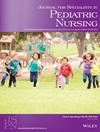Nursing Care Management and Glycemic Control Among Children With Diabetes Enrolled in Medicaid
Abstract
Purpose
The benefits of maintaining glycemic control for persons with diabetes include delaying the onset and slowing the progression of macro- and microvascular complications. However, many children and adolescents with diabetes do not regularly meet target hemoglobin A1c levels.
Our pilot project aimed to improve glycemic control among children and adolescents, 8 to 17 years, with insulin-dependent diabetes at greatest risk for complications and enrolled in North Carolina Medicaid at least 1 month during the study period.
Design and Methods
We used a pre-intervention post-intervention design. We implemented an intensive care management intervention, led by a nurse practitioner. The nursing intervention consisted of tele-health visits, emails, and MyChart messages with patients and caregivers to supplement in-clinic visits. Therapeutic communication skills were applied, including motivational interviewing techniques and unconditional positive regard. We measured glycosylated hemoglobin (HbA1c) at 6-month intervals before, during, and after the intervention period.
Results
Mean participant (n = 12) HbA1c levels dropped by 1.5 percentage points from baseline (12.8%) to the 6-month study end point (11.3%). Seventy-five percent of participants experienced some decrease in HbA1c during the study period.
Practice Implications
This pilot project demonstrated short-term success of care management and therapeutic communication interventions in reducing HbA1c levels among a sample of children and adolescents with complicated case histories. Our findings are consistent with other studies that found telephonic nursing support, care management, and motivational interviewing to be effective interventions among pediatric populations. These studies suggest that nurses can implement relatively low-resource interventions that add value to health services delivery for children and adolescents with insulin-dependent diabetes. However, more studies are needed to understand which combinations of interventions may be most effective.

 求助内容:
求助内容: 应助结果提醒方式:
应助结果提醒方式:


